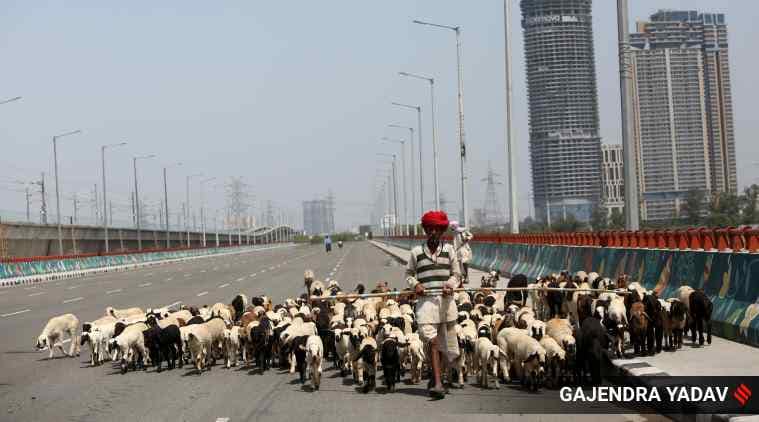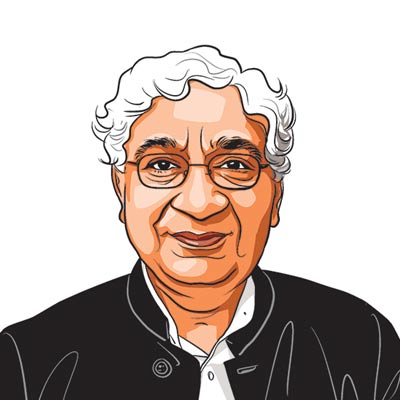In the lockdown, only those in regular employment — less than 10 per cent of the labour force — will continue to receive their incomes.
India has been in a complete lockdown since March 25. Its 1.3 billion people, except for those providing essential services, are confined to their homes. In effect, this began three days earlier and might well continue beyond April 14. The rationale is to slow down the spread of COVID-19, and to reduce the peak level of infections, breaking the chain of transmission through social distancing. The objective of saving lives is unexceptionable. However, for the well-being of people, saving livelihoods is just as important.
Given the massive population and our dilapidated public health system, it might seem that a total lockdown is the only way to manage the spread of the virus. But this is not a fail-safe solution. The outcomes will depend upon its feasibility and implementation.
Social, or physical, distancing is feasible among people who live in homes that have doors providing private spaces but is impossible in urban slums or shanty-towns where people live cheek-by-jowl, or even in rural India where the poor live in cramped spaces. The lockdown might simply distance the poor from the rest.
Opinion | Already rampant communal virus in India is gleefully piggy-back riding on coronavirus
The geographical size and distances of India might make it exceedingly difficult to maintain the supply of essentials to people, particularly when the entire country and its production systems are largely shut down. Supply chains are as good as their weakest links or binding shackles.
So far, the lockdown is an administrative fiasco that could turn into a nightmare. The police are a problem rather than the solution. Citizens are being harassed, intimidated, even beaten. More than half of the 12 million trucks have been stopped, supposedly for carrying non-essentials, on highways. Many truck drivers have abandoned their trucks and left. Insufficient supplies, exacerbated by hoarding, are already driving up prices of necessities imposing a disproportionate burden on the poor.
The government’s latest Labour Force Survey yields telling evidence. In 2017-18, our total labour force was 465 million. Of this total, 52 per cent were self-employed, 25 per cent were casual labour on daily wages, 13 per cent were in informal employment without any social protection, and only 10 per cent were in regular employment of which a significant proportion were contract workers without most usual benefits.
In the lockdown, only those in regular employment — less than 10 per cent of the labour force — will continue to receive their incomes. The rest are at risk. Among them, other than agriculture, where employment is seasonal and limited, the most vulnerable sectors, are construction (54 million), trade (47 million), transport (22 million), and hotels & restaurants (9 million) – a total of 132 million. Of this, only five million have regular employment, while 127 million people are self-employed, casual labour or informal workers.
Opinion | That Omar Sheikh is let off by Pakistan court should worry the world
The plight of migrants in our cities —construction workers, street vendors, restaurant employees, delivery persons, rickshaw drivers, and so on — is grim. Deprived of their work, and their dignity, uncertain about where their next meal will come from, most of them are desperate to return to their homes in villages. There is no public transport during the lockdown. Yet, there is a mass exodus. Thousands are setting out on foot, carrying their children, to walk hundreds of miles, braving the sun, their hunger, and the police.
The irony in the asymmetry is striking. The rich or the middle-class who travel abroad carry the virus. The poor who can never dream of travel abroad must carry the burden. The government chartered Air India planes with medical staff to bring migrants home from affected countries in Asia and Europe. When the closure of Indian airspace was imminent, the super-rich reportedly chartered private jets to bring home their children studying in the UK and Europe. In contrast, migrants in our cities, who have lost their livelihoods to the lockdown, must find night shelters and open kitchens run by local governments or charities, which are nowhere near enough.
In response, the government has announced a Rs 1.7 trillion package to help the poor, of which Rs 0.7 trillion are disbursements for existing schemes or drawdowns from funds available with state governments, without any new resource allocation. Of the remaining Rs 1 trillion, apart from an extra 15 kg of wheat or rice and 3 kg of pulses for poor households over three months (which should have been double if not triple these quantities given the massive stocks of foodgrains), the other components are far from sufficient and will be even less when implemented. This timid response, shaped by fiscal conservatism, simply cannot suffice.
Opinion | Success of lockdown will depend on implementation
Even if the lockdown ends on April 14, it will take much longer for economic activities that have shut-down to return to normal. In the meantime, the poor in urban and rural India would have experienced a massive cut in their meagre incomes, while accumulating debt for survival. Their already low nutrition levels will be even lower, which in turn is bound to reduce their resilience and lower their immunity to any infection, let alone COVID-19.
History does not repeat itself. But it would be wise to learn from history. In 1918, Spanish influenza, which spread worldwide, led to an estimated 50 million deaths. Around 18-20 million deaths were in India. The influenza came to India through 1.25 million soldiers returning after the war, through Bombay port, and going to their homes on trains. More than half of those who died were women — caregivers — because their nutrition levels, resilience and immunity were low.
The lockdown could have been introduced in phases, as it was in China and South Korea. It should have come with a prior plan to provide social safety nets for the poor. It should have anticipated the plight of migrants in our cities. And it could have been implemented better. We can only hope that the COVID-19 bug does not survive the high temperatures of our summer, but we must prepare for the worst.
This article first appeared in print edition on April 3 under the title “Lives and livelihoods”. The writer is an economist and former vice-chancellor, University of Delhi
Opinion | COVID-19 virus seems to have upper hand for now
? The Indian Express is now on Telegram. Click here to join our channel (@indianexpress) and stay updated with the latest headlines
For all the latest Opinion News, download Indian Express App.
- Two tales of sedition
It is instructive to remember the fate of the sedition charges pressed by two governments, run by two parties, in the past. Both had happy…
- Development 2.0
Planning Commission is dead. Its successor must focus on ideas over implementation…
Source: Read Full Article






